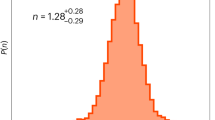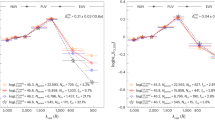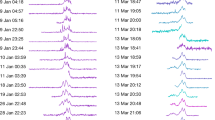Abstract
IT has been suggested (ref. 1 and McCrea (I.A.U. Symposium No. 63, 1972)) that the radio or optical variability of quasars should be related to their redshifts. If the latter originate from the Doppler effect, or are gravitational, the observed fluctuation rate of the radio or optical emission should also be redshifted, that is, slowed down, in proportion to 1 + z, where z is the usual redshift factor. Medd et al., measuring quasar flux densities with the Algonquin telescope, attempted to detect this effect by plotting the frequency of maxima occurrence in the flux-density curves against z but obtained an inconclusive result. Scargle2 also analysed the Algonquin observations, using the half-width of the autocorrelation function of the flux-density curve as a measure of fluctuation rate. Again, the results show considerable dispersion, but Scargle argues that regression analysis supports the expected relationship. We present here a preliminary version of an analysis based on the power spectrum of the flux-density curves, which establishes the expected result.
This is a preview of subscription content, access via your institution
Access options
Subscribe to this journal
Receive 51 print issues and online access
$199.00 per year
only $3.90 per issue
Buy this article
- Purchase on Springer Link
- Instant access to full article PDF
Prices may be subject to local taxes which are calculated during checkout
Similar content being viewed by others
References
Medd, W. J., Andrew, B. H., Harvey, G. A. & Locke, J. L. Mem. R. astr. Soc. 77, 109–158 (1972).
Scargle, J. D. I.A.U. Symp. Radio Astronomy and Cosmology, Cambridge, England, 1976 (in the press).
Jenkins, G. M. & Watts, D. G. Spectral Analysis and its Applications, 109 (Holden-Day, San Francisco, 1968).
Author information
Authors and Affiliations
Rights and permissions
About this article
Cite this article
QUIGLEY, M., LONG, D. Redshift effect on the timescale of quasar radio variability. Nature 266, 38–40 (1977). https://doi.org/10.1038/266038a0
Received:
Accepted:
Published:
Issue Date:
DOI: https://doi.org/10.1038/266038a0
Comments
By submitting a comment you agree to abide by our Terms and Community Guidelines. If you find something abusive or that does not comply with our terms or guidelines please flag it as inappropriate.



